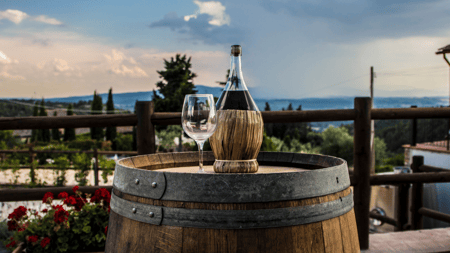Chianti Classico is not just beautiful and famous for its iconic landscape; it’s one of the most renowned areas for the quality of its wines. Dozens of Chianti Classico vineyards spread between the city of Florence to the North and Siena to the South.
The history of Chianti goes back to 1716 when the Grand Duke Cosimo Medici III demarcated the first wine zone (Chianti Classico). Later, the wines of Chianti (Denominazione di Origine Controllata) DOC included the sub-region of Chianti Classico. DOC are rules that govern the quality of wines but they’re more relaxed than those for the DOCG status.
By 1996, the Chianti Classico wine region earned its own Denominazione di Origine Controllata e Garantita(DOCG). The DOCG is the highest level of Italian wine classification. Today, more than 75 million liters of wine are produced from their vineyards every year. The Chianti Classico zone produces some of the highest regarded wine from the region.
Chianti Classico wine was initially made from a wide variety of grapes, including white grapes. Today the Sangiovese grape is the predominant grape used.
The unmistakable Black Rooster (Gallo Nero) label is the symbol of Chianti Classico wines. Legally, for wine to bear Chianti Classico DOCG label, it must contain at least 80% Sangiovese grapes. This grape gives the Chianti wine its characteristic red color, savory notes, and a hint of racy acidity. Chianti Classico wines are aged for 30 months, with three months in a bottle. A special testing panel (Consorzio Vino Chianti Classico) must approve the final taste. Although this region is known for the red wine, it also produces white wines. These white wines are also made from grapes grown within the zone. They must, however, have the Indicazione Geografica Tipica (IGT) designation.
Want to drink your way in Tuscany? Check the 5 nights Tuscany wine tour.
Share this article
-
Share on Facebook
Share on Facebook
-
Share on Twitter
Share on Twitter
-
Share on WhatsApp
Share on WhatsApp
-
Share on Pinterest
Share on Pinterest
-
Share on LinkedIn
Share on LinkedIn
-
Share on Tumblr
Share on Tumblr
-
Share on Vk
Share on Vk
-
Share on Reddit
Share on Reddit
-
Share by Mail
Share by Mail



